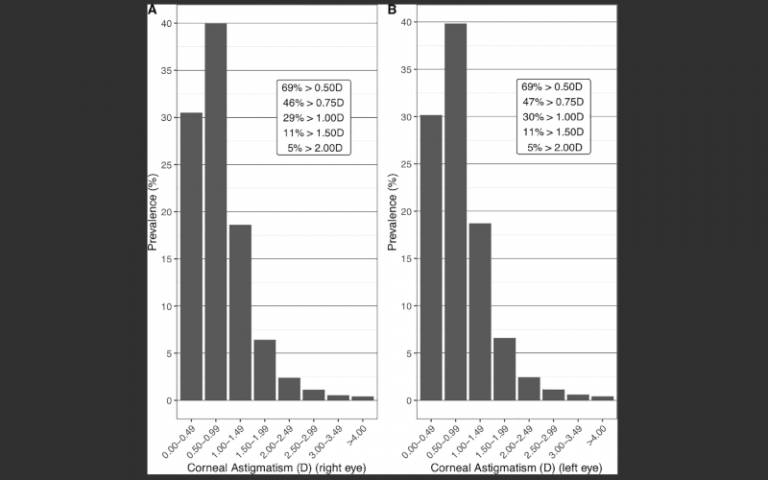New IoO study points to previously unreported risk factors associated with corneal astigmatism
23 October 2019
A recently published paper by a team based at the UCL Institute of Ophthalmology – led by Dr Nikolas Pontikos – has confirmed previous associations with this common eye condition, while identifying a number of unreported risk factors.

Paper title: ‘Frequency and distribution of corneal astigmatism and keratometry features in adult life: Methodology and findings of the UK Biobank study’
Authors: Dr Nikolas Pontikos, Dr Sharon Chua, Prof. Paul J. Foster, Stephen J. Tuft
About the paper
Corneal astigmatism – an imperfection in the curvature of the cornea – causes a refractive error in the eye and commonly leads to blurred vision. The study, led by the IoO’s Dr Nikolas Pontikos, set out to look for the distribution of corneal astigmatism and the factors associated with it in the UK Biobank population. UK Biobank is a resource of 500,000 volunteers whose health and well-being are followed to provide detailed, anonymised data for scientific research.
What were the findings of the study?
The team analysed UK Biobank data on 83,751 participants. They found that 69%, 29%, 11% and 5% had corneal astigmatism with ≥0.5, 1.0, 1.5 and 2.0 dioptres respectively. Characteristics significantly associated with higher corneal astigmatism were (by order of magnitude):
- female gender
- lighter skin colour
- lower alcohol intake
- lower corneal-compensated intraocular pressure (ccIOP)
- younger age
- higher Townsend deprivation index
Increased corneal astigmatism was also found to be significantly associated with amblyopia or strabismus.
What do the findings suggest?
Based on this large UK dataset, the findings confirm previous associations with corneal astigmatism (such as younger age and female gender), but they also identify a number of previously unreported risk factors. These include lighter skin colour, lower alcohol intake, later age having completed full-time education later, lower ccIOP and higher Townsend deprivation index. The results could lead to a better understanding of refractive error development and, potentially, novel treatment options to limit its development.
More information
- Read the full article online (PLOS ONE website)
- Find out more about the IoO’s research
- Visit the UK Biobank website
Author profiles
Image: Graph showing distribution of corneal astigmatism in the UKBB in bins of 0.5D: (A) Distribution of corneal astigmatism in right eye; (B) Distribution of corneal astigmatism in left eye. View full-size image
 Close
Close

